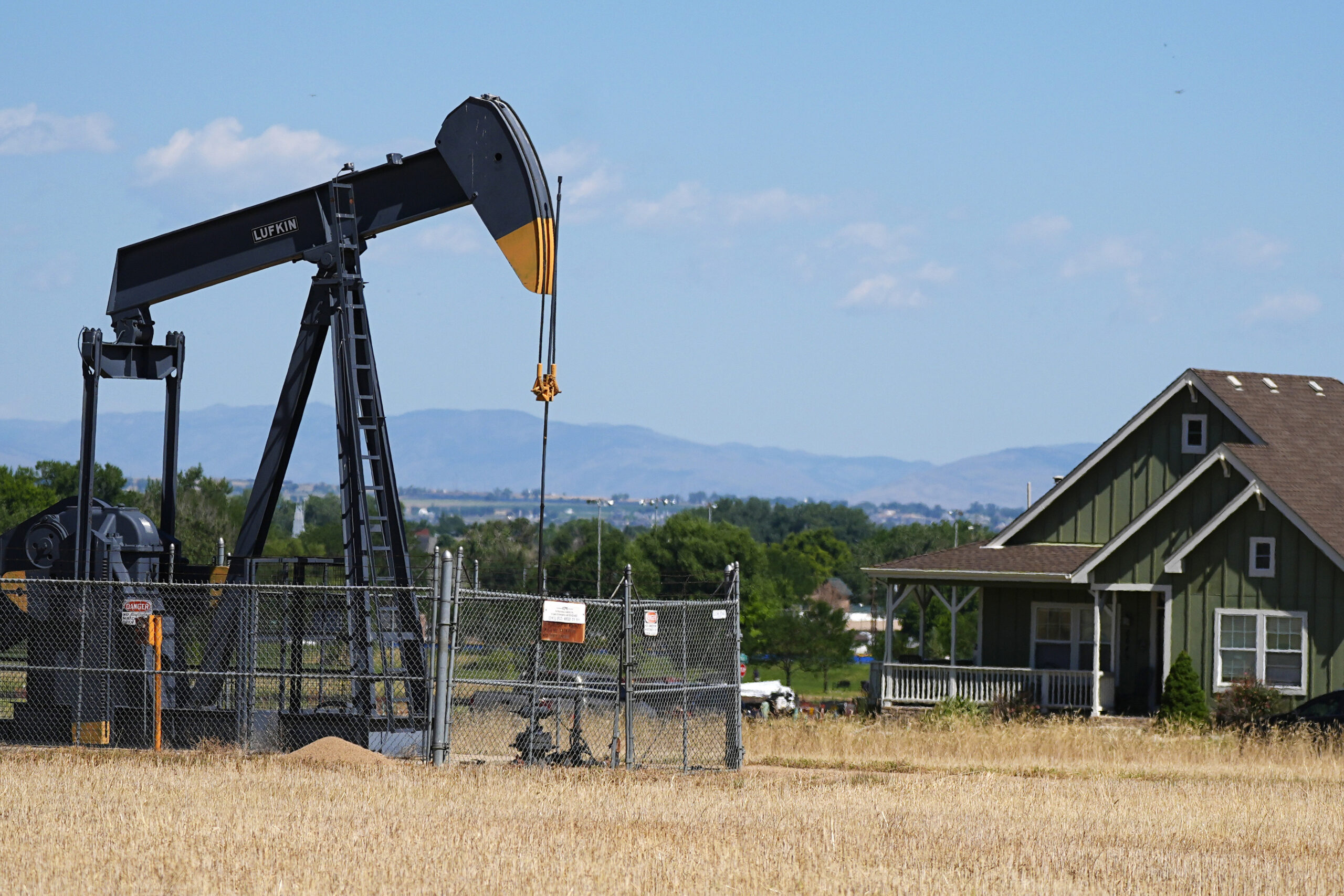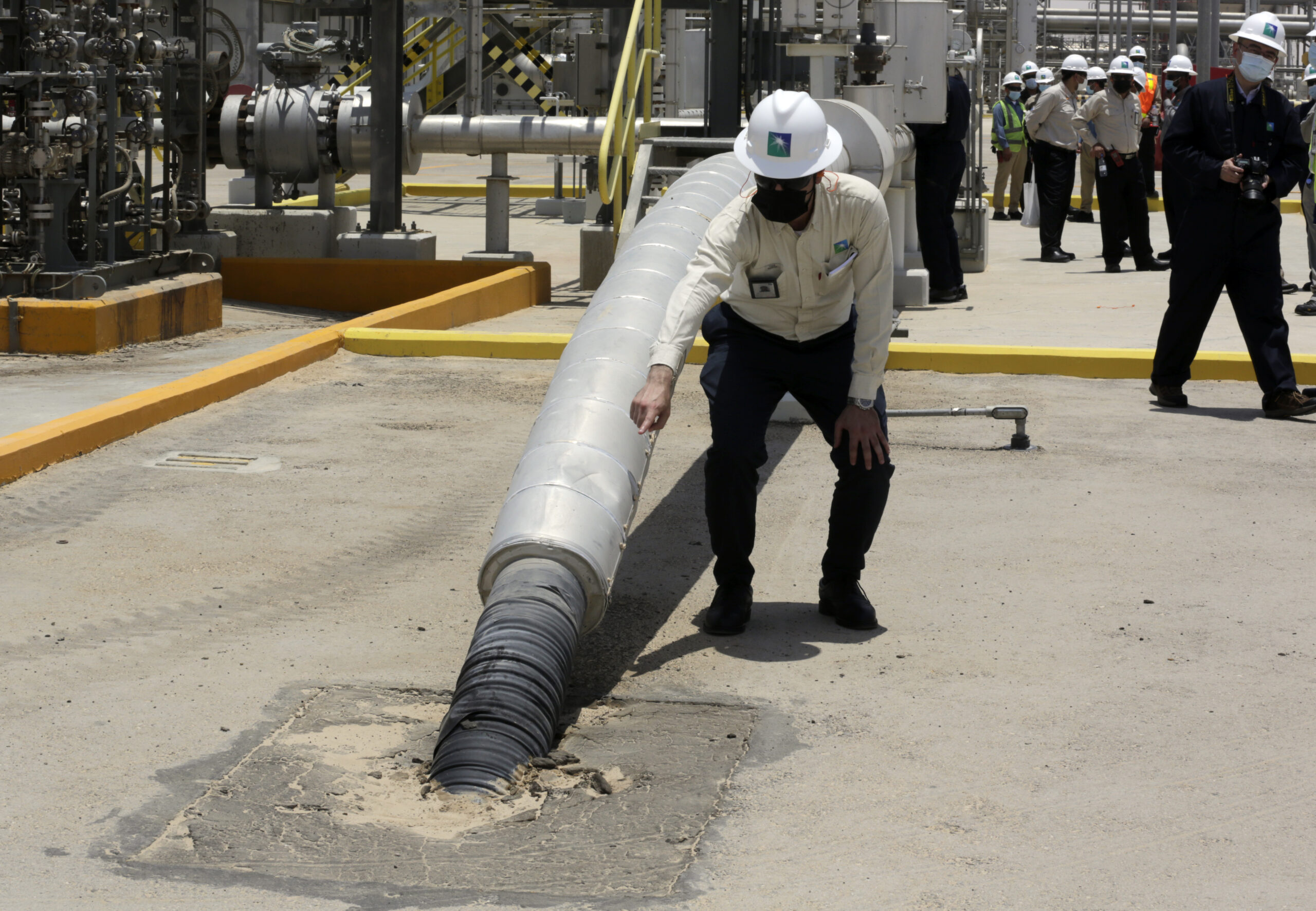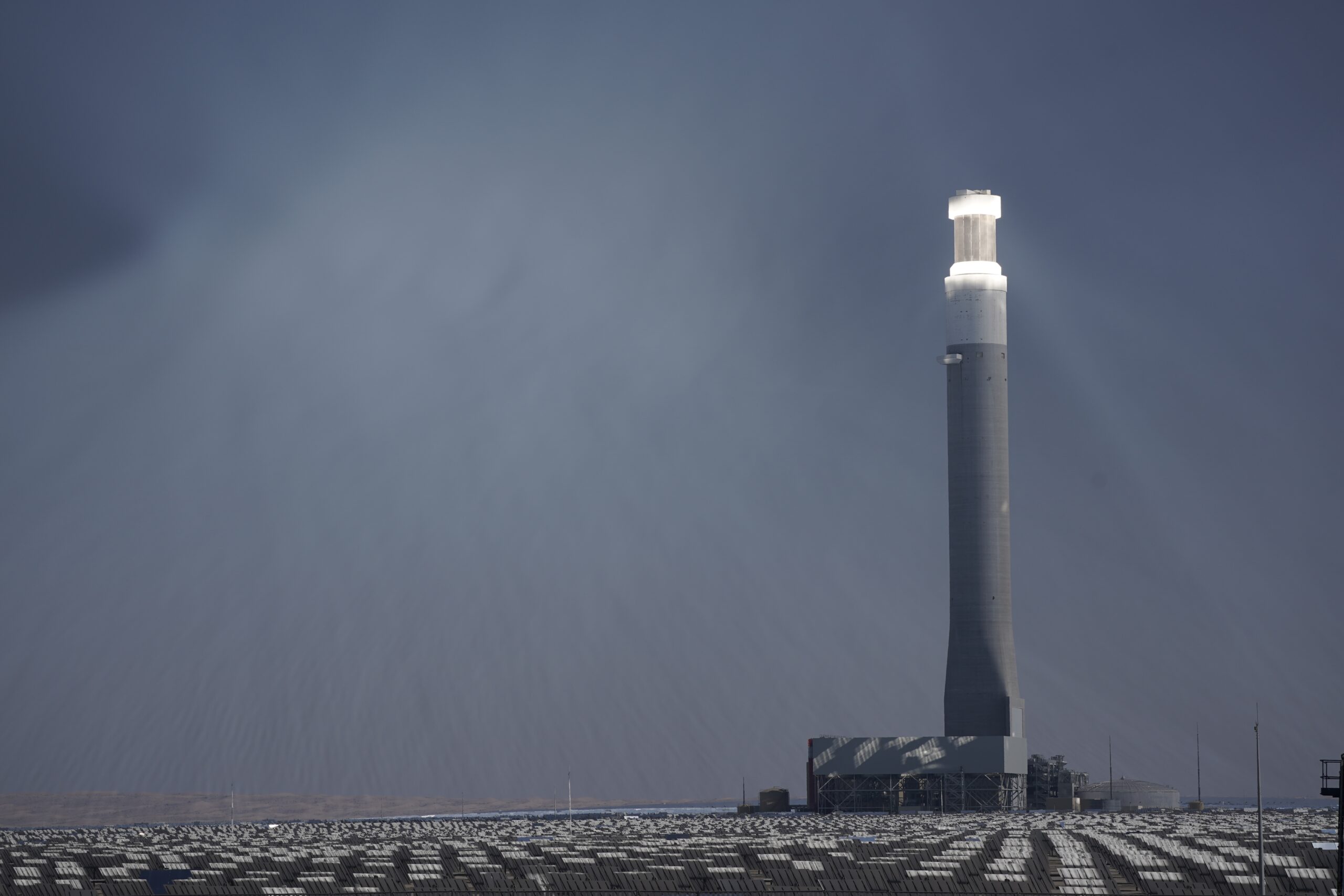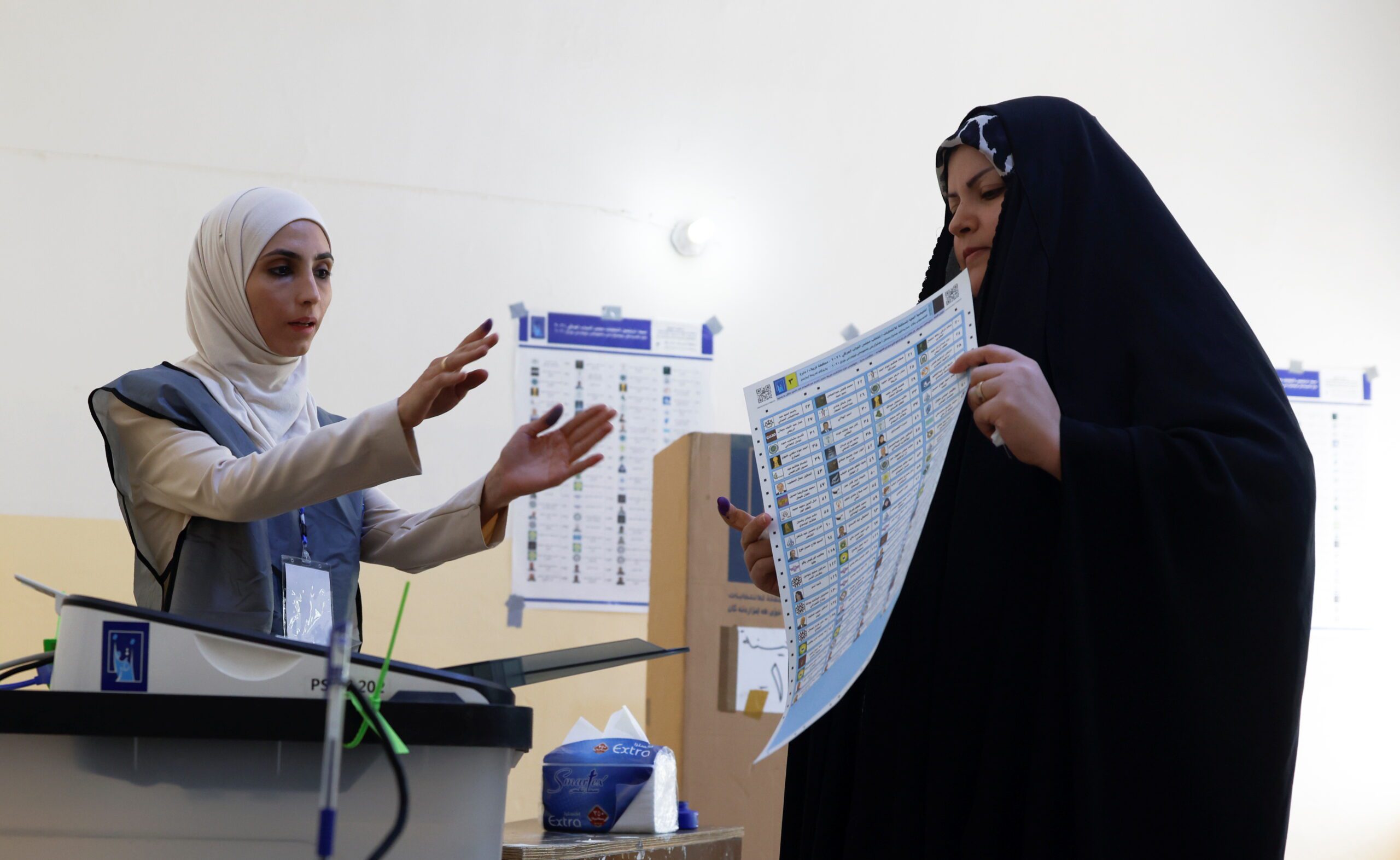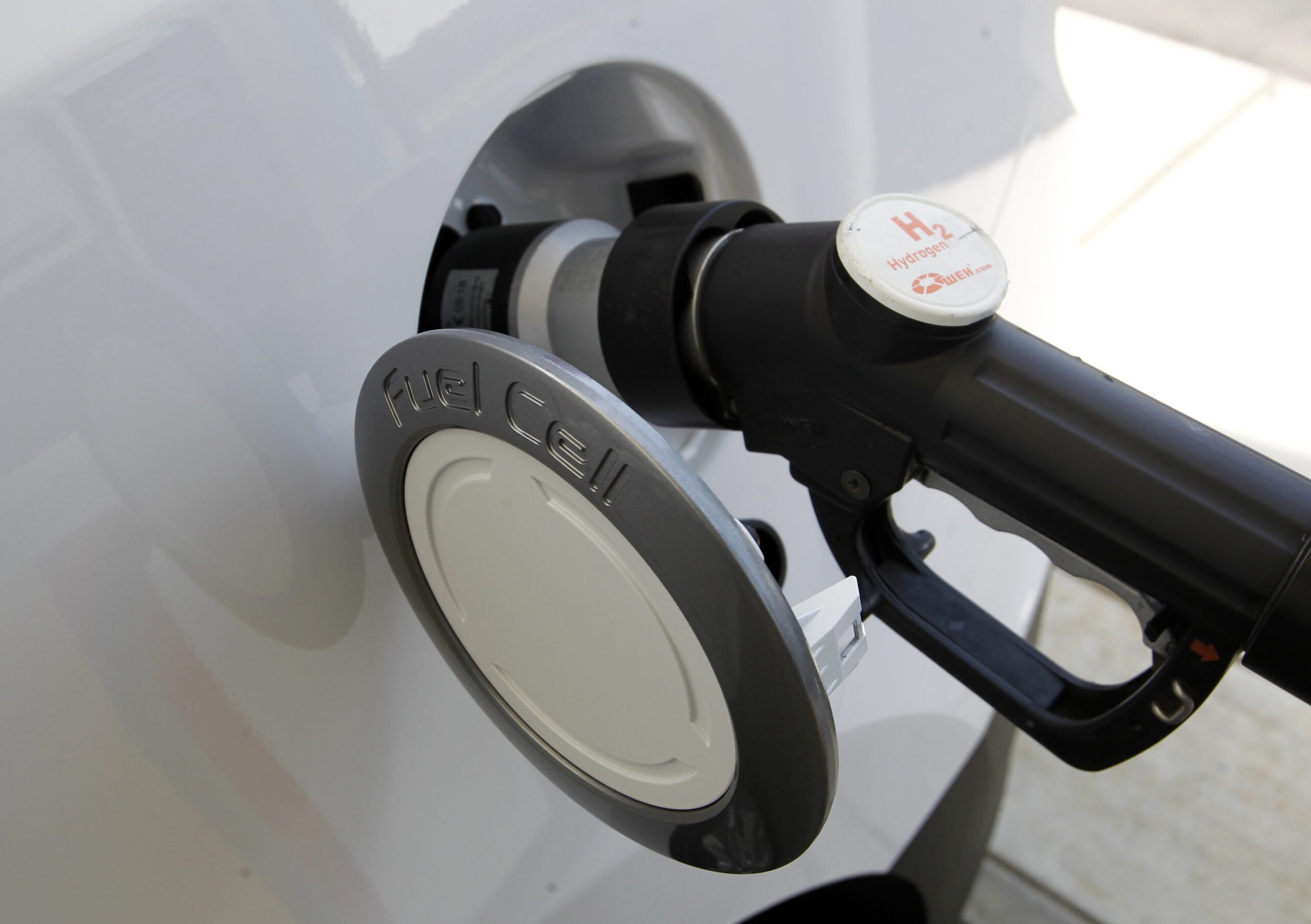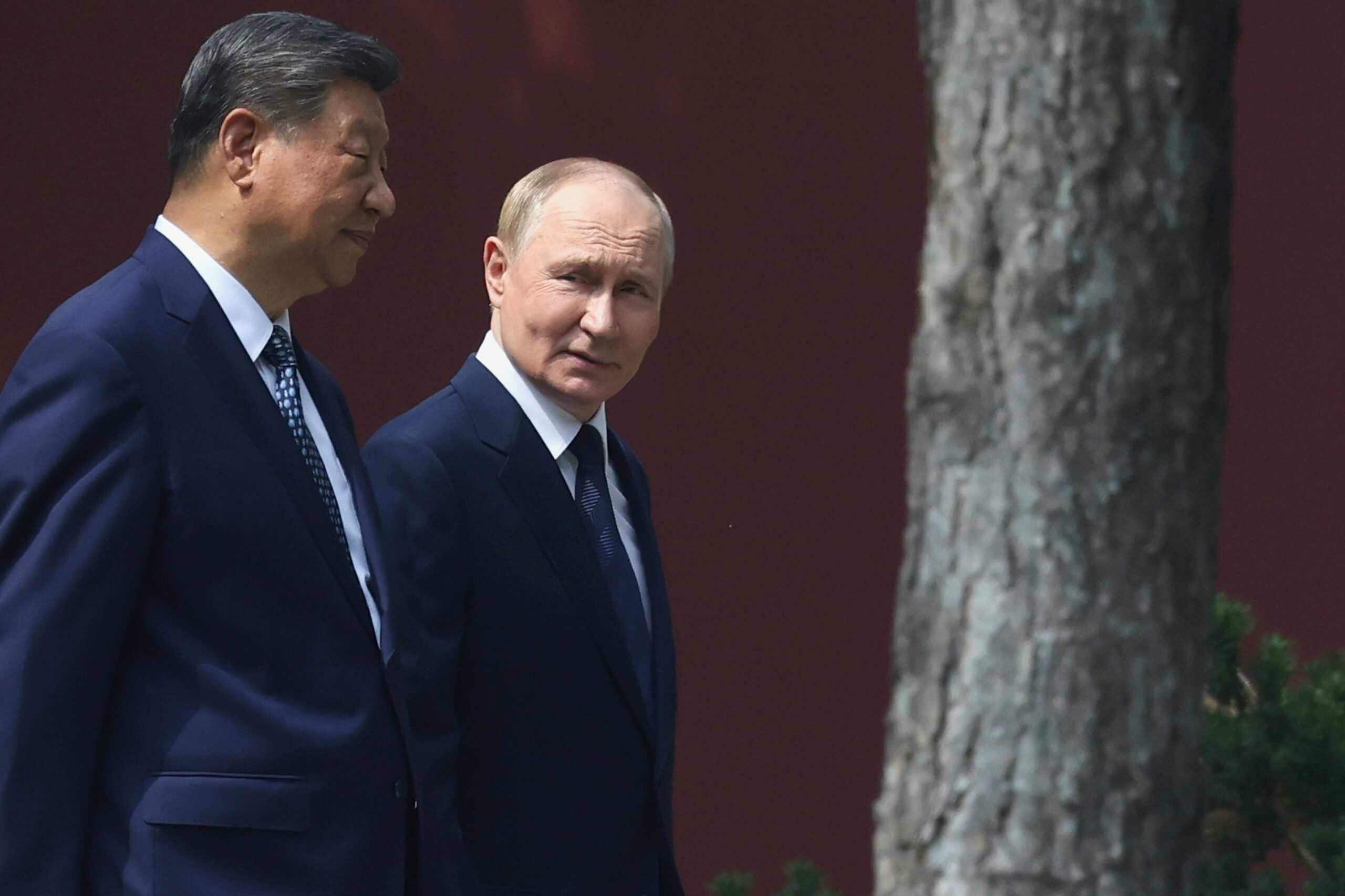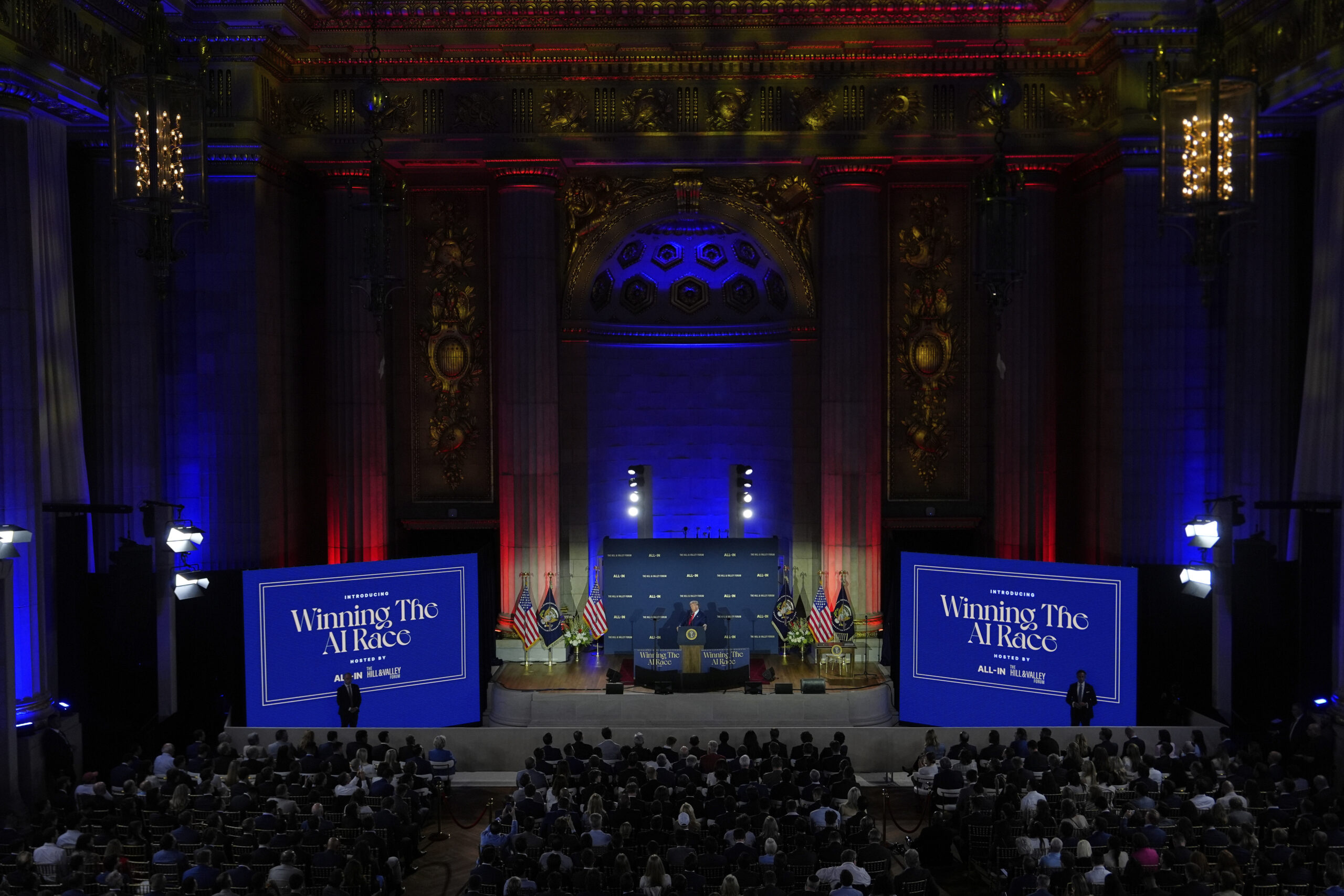What Trump’s LNG Push Means for the Gulf States
Gulf producers are adapting to global market changes and may even benefit from U.S. export growth by leveraging investments, strengthening diplomatic ties, and accelerating their own energy-transition agendas.
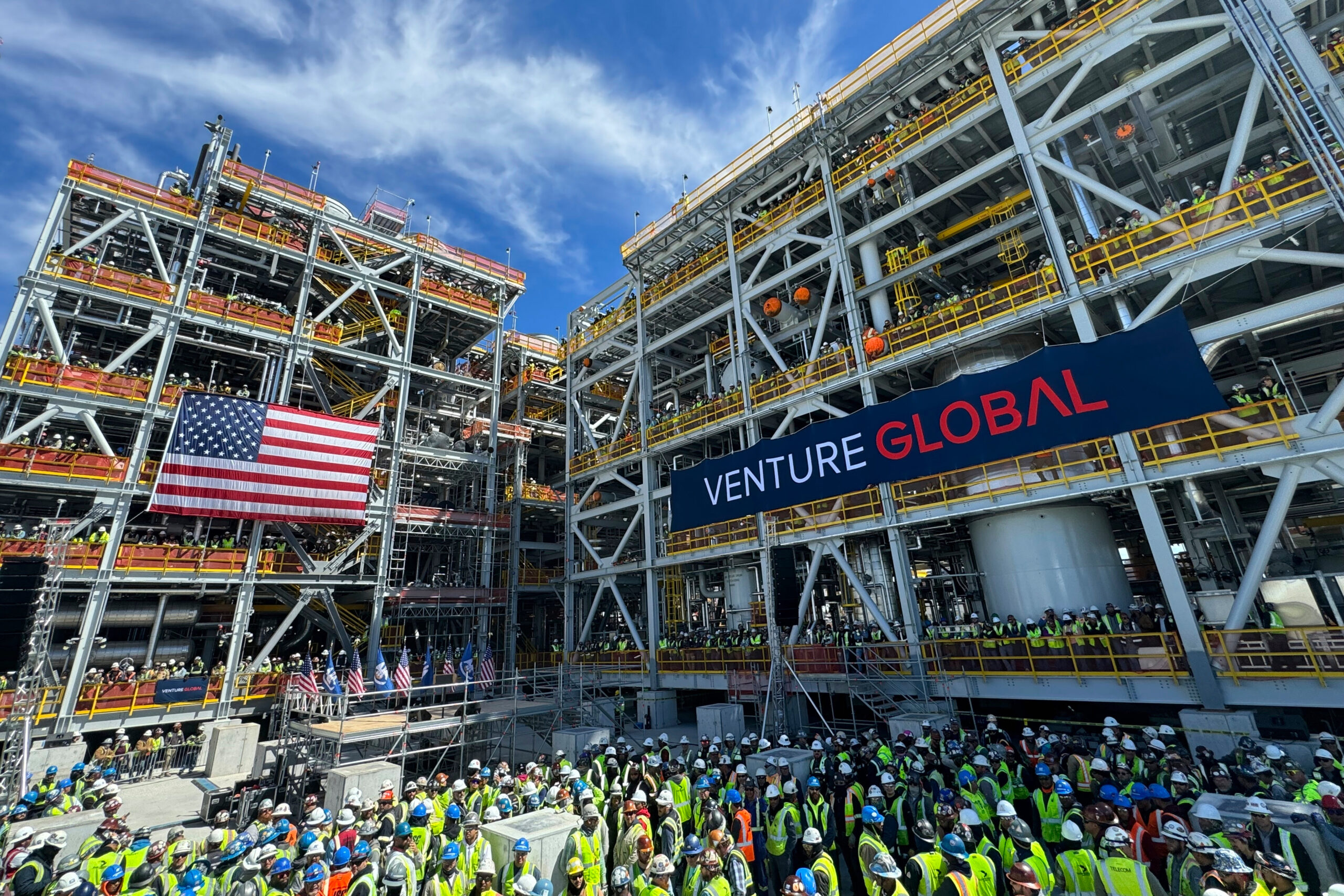
President Donald J. Trump’s trade announcements with Japan, the European Union, South Korea, and other international partners were touted as evidence of a “major expansion of U.S. energy exports,” with liquefied natural gas at the center of this vision. These agreements are in line with Trump’s long-held U.S. “energy dominance” doctrine, which prioritizes the use of energy exports as a strategic tool to strengthen U.S. geopolitical influence and secure economic gains.
These initiatives, however, are unfolding in a highly competitive global environment. Other major producers – including the Gulf Arab states – are deeply embedded in the global LNG market and already dominate key trade corridors. Qatar is the world’s third-largest LNG exporter, while Saudi Arabia and the United Arab Emirates are positioning themselves as strategic investors in LNG infrastructure, including U.S. export facilities. Thus, U.S. ambitions are not taking place in a vacuum; they directly intersect with Gulf states’ commercial strategies and their evolving roles in global energy markets.
These structural realities of U.S. LNG exports reveal a disconnect between political messaging and market conditions, which has implications not only for U.S. energy diplomacy but also for Gulf Arab states seeking to consolidate their influence, hedge against geopolitical risks, and navigate the accelerating global energy transition.
U.S. LNG Export Ambitions and Structural Constraints
Trump’s energy diplomacy has leaned heavily on symbolic announcements designed to convey momentum. One of the highest-profile initiatives involved a proposed joint LNG venture in Alaska including Japanese participation. Trump publicly directed Secretary of the Interior Doug Burgum to “set up” the partnership, portraying it as proof of strong U.S.-Japanese energy cooperation. Yet the “Alaska LNG” project – a $44 billion infrastructure plan including an 807-mile pipeline from Alaska’s North Slope and a new liquefaction terminal – remains at an early stage and lacks firm purchase commitments from Japanese buyers. In March, a nonbinding agreement was signed among the project’s owners, including the Glenfarne Group and Taiwan’s state-owned oil and gas entity, but it fell far short of guaranteeing significant LNG flows.
Other announced agreements carried similar limitations. The EU’s pledge to purchase $750 billion in U.S. energy products over three years was hailed as transformative for transatlantic energy relations. In practice, however, the EU Commission lacks authority to compel member states or private companies to purchase specific volumes of U.S. LNG. Procurement decisions remain decentralized and market driven, making it unlikely that Europe will achieve the headline targets. Likewise, a much-publicized $100 billion energy purchase agreement from South Korea and $350 billion investment pledge offered little detail on timelines, enforcement mechanisms, or binding contractual obligations.
Even if the political will exists to deliver on these pledges, U.S. export infrastructure faces physical constraints. Since the first LNG shipment left Cheniere Energy’s Sabine Pass terminal in 2016, U.S. exports have surged, making the country the world’s largest LNG exporter, surpassing both Australia and Qatar in 2023. This remarkable growth was driven by shale gas development and supply disruptions following Russia’s invasion of Ukraine in 2022. Yet U.S. LNG terminals are already running near maximum usage, with Gulf Coast facilities regularly operating above 95% capacity.
Planned expansions – Plaquemines LNG in Louisiana and Corpus Christi LNG Stage 3 and Golden Pass LNG in Texas – are expected to add substantial export capacity. While significant, this is likely to be far short of the tripling of exports needed to meet Europe’s announced targets. Moreover, most easily accessible U.S. gas reserves are already in production, meaning additional supply will depend on technically challenging and costlier fields, with potential environmental sensitivities.
Pipeline bottlenecks and political opposition present further obstacles. New pipeline projects often trigger eminent domain disputes and lawsuits, while environmental groups have mobilized against new fossil fuel infrastructure, arguing that such investments lock in decades of emissions and conflict with federal and state climate commitments. And even if the Trump administration’s policy trajectory shows greater willingness and capacity than its predecessors to override or circumvent regulatory restrictions, legal challenges and potential state coordination might blunt these efforts in the longer term. These dynamics have produced a polarized regulatory landscape that complicates any rapid expansion of LNG capacity.
Market Dynamics in Europe and Asia
The demand side of the equation further challenges the optimistic assumptions behind U.S. LNG diplomacy. Europe has invested heavily in new LNG import capacity, expanding its terminal infrastructure by more than 40% between 2021 and 2024. Yet actual LNG imports fell nearly 20% in 2024 compared with 2023. Many European terminals are underutilized, with roughly half operating below 40% capacity. This decline reflects multiple structural shifts, including improved energy efficiency, accelerated deployment of renewables, and ambitious climate targets designed to phase out fossil fuel consumption.
Even where new demand exists, long-term contractual commitments constrain flexibility. European buyers remain bound by supply agreements with Qatar, Nigeria, and Oman, limiting the room for redirecting purchases to U.S. exporters. Furthermore, the EU’s evolving climate regulations – including proposals to limit methane emissions from imported LNG – introduce another layer of uncertainty for U.S. producers, who already face scrutiny for methane leakage associated with shale gas operations.
Asian markets present similar complexities. Japan and South Korea have signed nonbinding letters of intent expressing interest in U.S. LNG, but both countries are committed to long-term decarbonization strategies and are aggressively investing in renewables and hydrogen. Moreover, new supply options are emerging. Canada is expanding LNG export capacity on its west coast, providing Asian buyers with a geographically closer and potentially cheaper alternative to U.S. cargoes from Alaska or the Gulf Coast.
Global competition is intense and price sensitive. Buyers in markets such as Mexico, India, Brazil, and the Middle East prefer flexible procurement models based on spot cargoes or short-term contracts, giving them leverage to secure lower prices. The risk of Russian pipeline gas reentering markets at discounted prices adds further uncertainty. Although the EU has pledged to phase out Russian gas by 2027, member states, including Hungary and Slovakia, have resisted full disengagement. If geopolitical shifts ease sanctions and Russian pipeline flows resume, U.S. LNG – burdened by liquefaction and shipping costs – could lose competitiveness.
Domestic market implications in the United States further complicate the export picture. A NERA Economic Consulting report estimates that each additional billion cubic feet per day of LNG exports raises domestic natural gas prices by up to 2.5%, with household energy costs potentially rising by $122 annually by 2050. These pressures have fueled political resistance in states heavily reliant on natural gas for heating and power generation, amplifying the political risks of aggressive export expansion.
The gap between political announcements and market realities is not new. The 2019 “Phase One” trade deal with China, for example, included a commitment by Beijing to purchase $200 billion in U.S. agricultural and energy products, yet most targets went unmet and no penalties were applied. Buyers often value flexibility and diversification over rigid political commitments. A June 2022 explosion at the Freeport, Texas LNG terminal, which temporarily halted exports, underscored the vulnerability of relying on single suppliers and highlighted the premium buyers place on portfolio diversity.
Implications for the Gulf States
These dynamics have direct consequences for the Gulf Arab states, which have long been major players in global LNG markets and are adapting their strategies to a shifting energy landscape. Qatar benefits from exceptionally low production costs, an integrated supply chain, and geographic proximity to both European and Asian markets. Its North Field expansion will increase annual LNG production capacity from 77 million metric tons to 126 million metric tons by 2027, consolidating Qatar’s role as a reliable supplier with long-term contractual relationships. Unlike U.S. exporters, which rely heavily on flexible spot cargoes, Qatar’s business model emphasizes decades-long take-or-pay contracts that offer buyers price stability and security of supply – an advantage in an era of heightened market volatility.
Saudi Arabia and the UAE are also shaping LNG markets but through a different approach. Rather than competing as major LNG exporters themselves, they have strategically invested in the U.S. LNG value chain. Saudi Aramco has acquired stakes in projects such as Sempra’s Port Arthur terminal, while the Abu Dhabi National Oil Company has taken an equity position in NextDecade’s Rio Grande facility. These investments secure physical access to U.S. LNG exports, diversify the Gulf states’ energy portfolios, and provide insight into U.S. production and export trends.
This dual approach – Qatar consolidating its export dominance and Saudi Arabia and the UAE pursuing strategic equity stakes – provides Gulf states with a unique hedge. Even if U.S. exports increase and begin to capture a larger share of European or Asian markets, Gulf stakeholders are positioned to benefit from the upside. At the same time, Gulf producers retain distinct competitive advantages. Proximity to Asia, which accounts for the bulk of future LNG demand growth, offers Gulf exporters lower shipping costs and faster delivery times than U.S. suppliers can provide. Gulf states are also innovating around carbon intensity, with Qatar investing in carbon capture and storage at its LNG facilities and the UAE pursuing integrated “low-carbon” LNG solutions to appeal to climate-conscious buyers.
Energy-transition strategies are an important part of the Gulf response. While LNG is framed as a “bridge fuel” supporting decarbonization, Gulf states are simultaneously investing in renewable power, hydrogen production, and related technologies. The UAE has established itself as a hub for clean energy, Saudi Arabia’s Vision 2030 emphasizes diversification away from hydrocarbons, and Qatar is branding its LNG as a lower-carbon option. These initiatives position Gulf producers to remain competitive even as buyers tighten procurement criteria to reflect emissions intensity and sustainability.
The geopolitical dimension is equally significant. LNG has long been used as a diplomatic instrument by Gulf states, which leverage long-term contracts to strengthen bilateral ties, especially in Asia where energy security is paramount. Gulf states are diversifying their diplomatic and economic partnerships, deepening engagement with China, India, and Southeast Asia while maintaining strategic relationships with Western partners. U.S. announcements of ambitious LNG sales are likely viewed by Gulf players less as an existential threat and more as a factor to be managed – one that can even present new opportunities. For example, by taking equity stakes in U.S. facilities, Gulf states can influence market flows and gain bargaining leverage with both buyers and sellers.
In the near term, U.S. LNG expansion is unlikely to displace Gulf producers in a significant way. Qatar’s incumbency and cost advantages, coupled with the Gulf’s integration of LNG with emerging clean-energy strategies, give these states a durable competitive edge. Over the longer term, Gulf producers’ ability to adapt to changing market and policy conditions, including potential shifts toward low-carbon or “green” gas, will be critical. Here, the Gulf states may even have an advantage over the United States, where climate policy inconsistency and infrastructure opposition could limit growth potential.
Gulf Producers Adapt
Trump’s trade announcements projected confidence in U.S. LNG export potential and sought to position the country as the energy superpower. Yet, export capacity constraints, shifting demand patterns in Europe and Asia, and competitive global supply dynamics may limit the immediate impact of U.S. ambitions. These realities create both challenges and opportunities for the Gulf states.
Qatar continues to dominate LNG markets through its low-cost structure and long-term contractual approach, while Saudi Arabia and the UAE have hedged against U.S. competition by investing directly in U.S. LNG infrastructure. Together, these strategies position the Gulf states to remain key players not only in traditional LNG markets but also in emerging low-carbon energy systems. Far from being displaced, Gulf producers are adapting to global market changes and may even benefit from U.S. export growth by leveraging investments, strengthening diplomatic ties, and accelerating their own energy-transition agendas.
The views represented herein are the author's or speaker's own and do not necessarily reflect the views of AGSI, its staff, or its board of directors.


